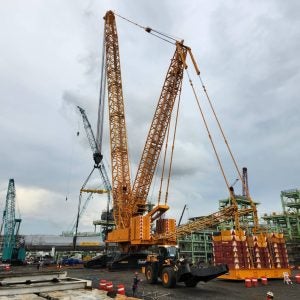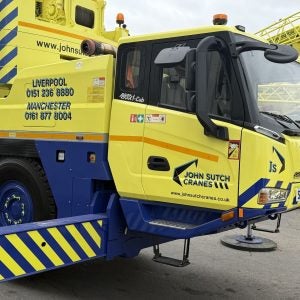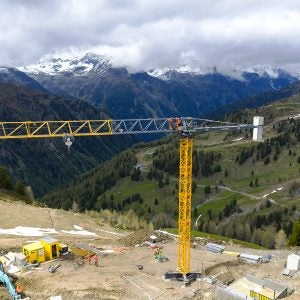
The steel structures that needed to be lifted had a length of over 50m and weighed 265t, making them not only extremely unwieldy, but also heavy. This meant that the only possible solution was to use a powerful crane. On the other hand, space at the work site was extremely tight, meaning that the crane also had to be very compact and maneuverable. The CC 6800-1 lattice boom crawler crane met these requirements.
However, the crane first needed to be transported from the Sarilar location in Gebze, near Istanbul, to the work site in Adana, in the south of Turkey. “Our convoy of just under 30 transport trucks and five heavy-haulage lowbed trailers needed almost two weeks to complete the 900km journey,” said technical manager Zafer Yazici, who was responsible for the project.
Once the convoy arrived at the work site in Adana, the ten-person rigging team started tackling the challenges that awaited it: “We had to set up the crane while the power plant was running. This, of course, meant that there were a number of restrictions that we had to observe, especially in terms of when and where we could move. So you need to add that to the fact that space at the premises was already pretty tight. We also had to use two telescopic cranes to set up the boom, sometimes working at heights of up to 15m. Our technicians used an aerial work platform for all work at height rigging operations,” Yazici said.
For the lifts, the team chose an SWSL boom configuration with a 72m main boom and a 42m luffing jib. With this setup, the CC 6800-1 was well equipped to lift the 52m-long, 5m-tall, 0.5m-wide, 255t steel structures at a radius of 44m to heights of up to 100m.
In order to ensure that everything would be under control at all times during the lifts, the three crane operators were assisted not only by the site manager, but also by a supervisor and several signallers.
The CC 6800-1 crane was scheduled to be at the work site for a total of ten months. “Thanks to our careful planning and the crane’s high reliability, we were able to stick to this schedule without a problem,” said Hanifi Gürbüz, member of Sarilar’s board of directors.







